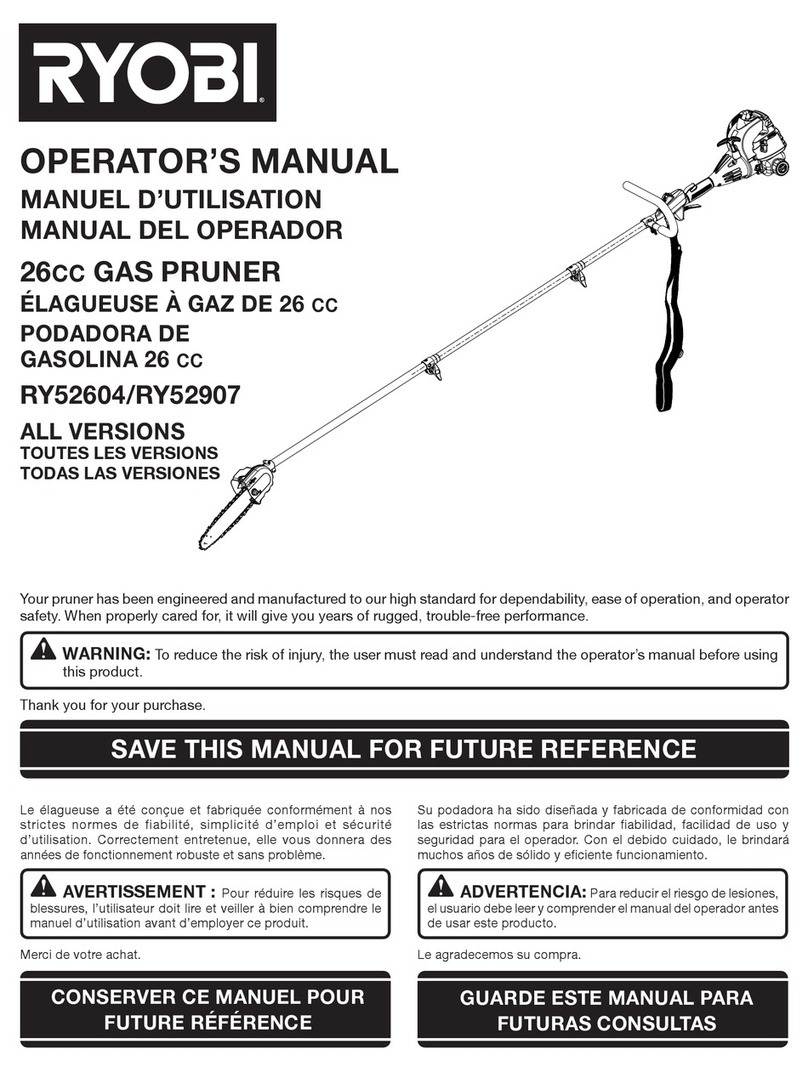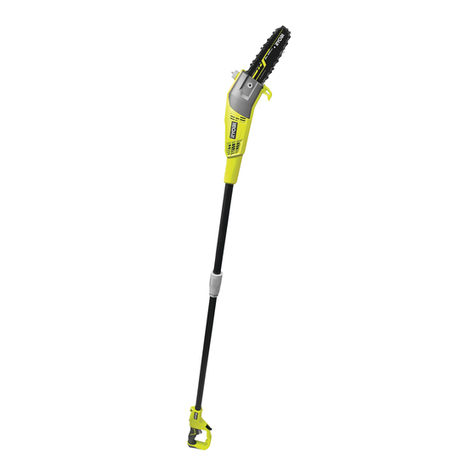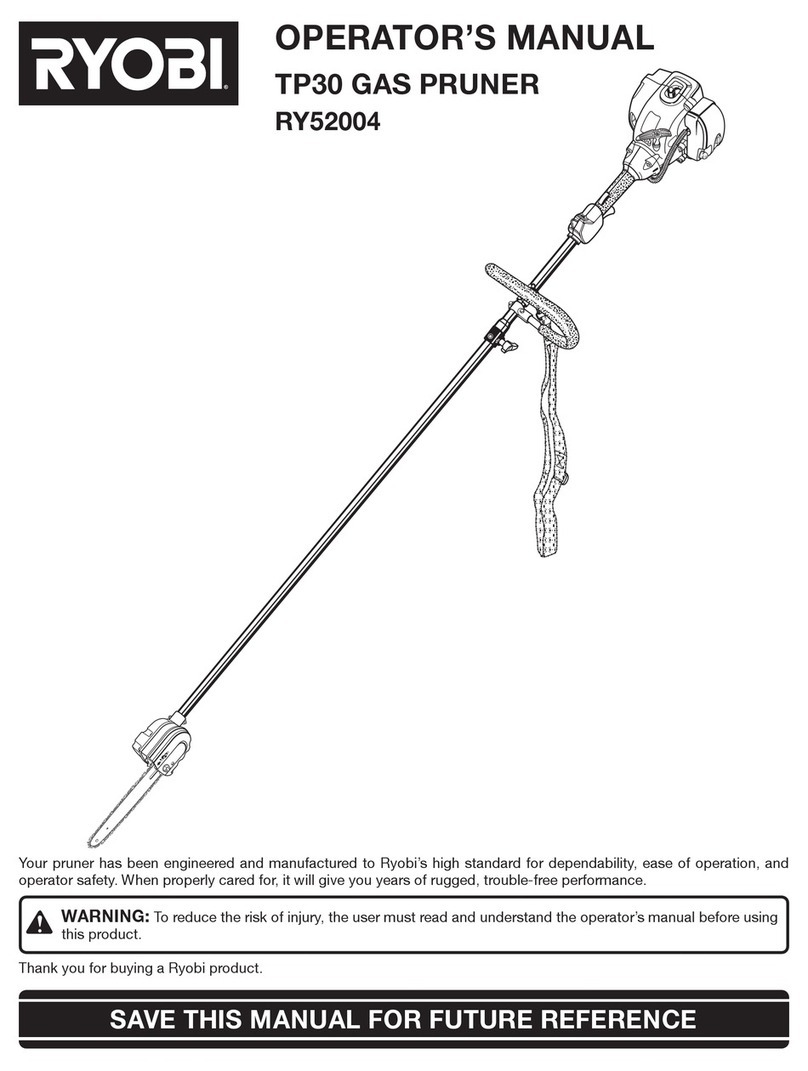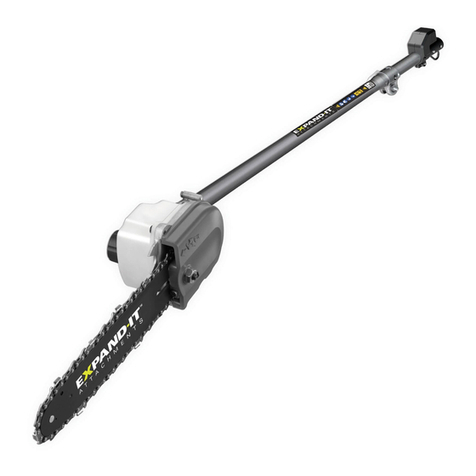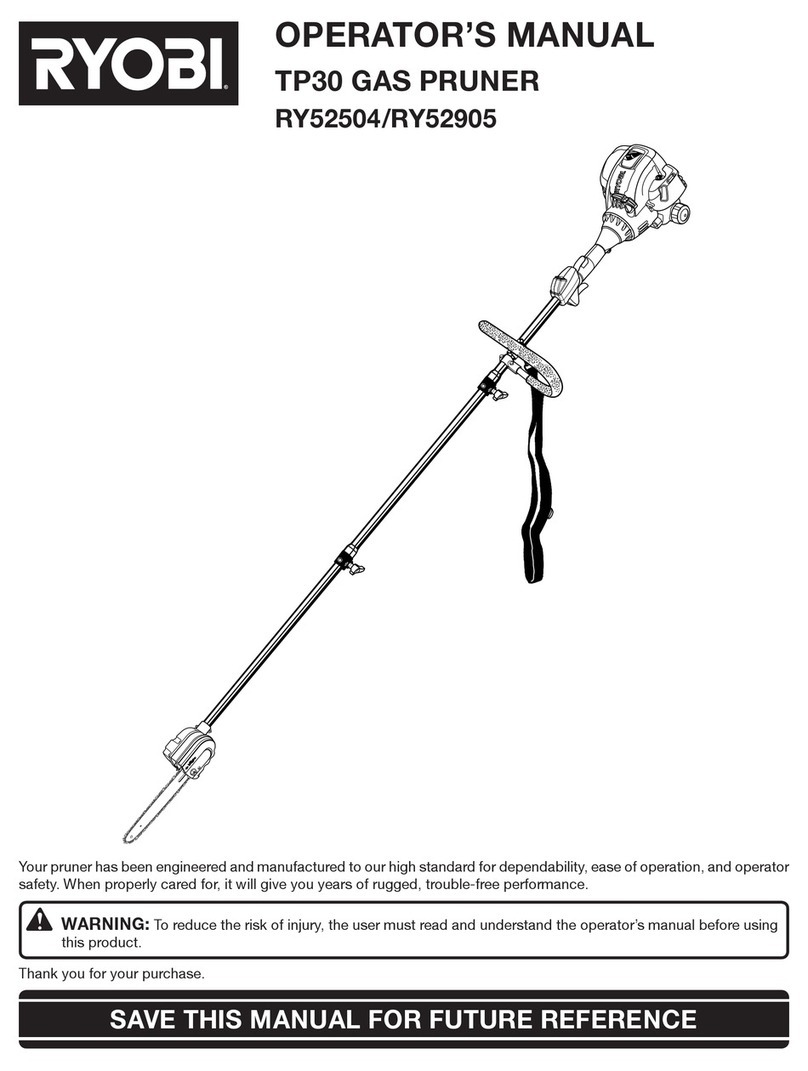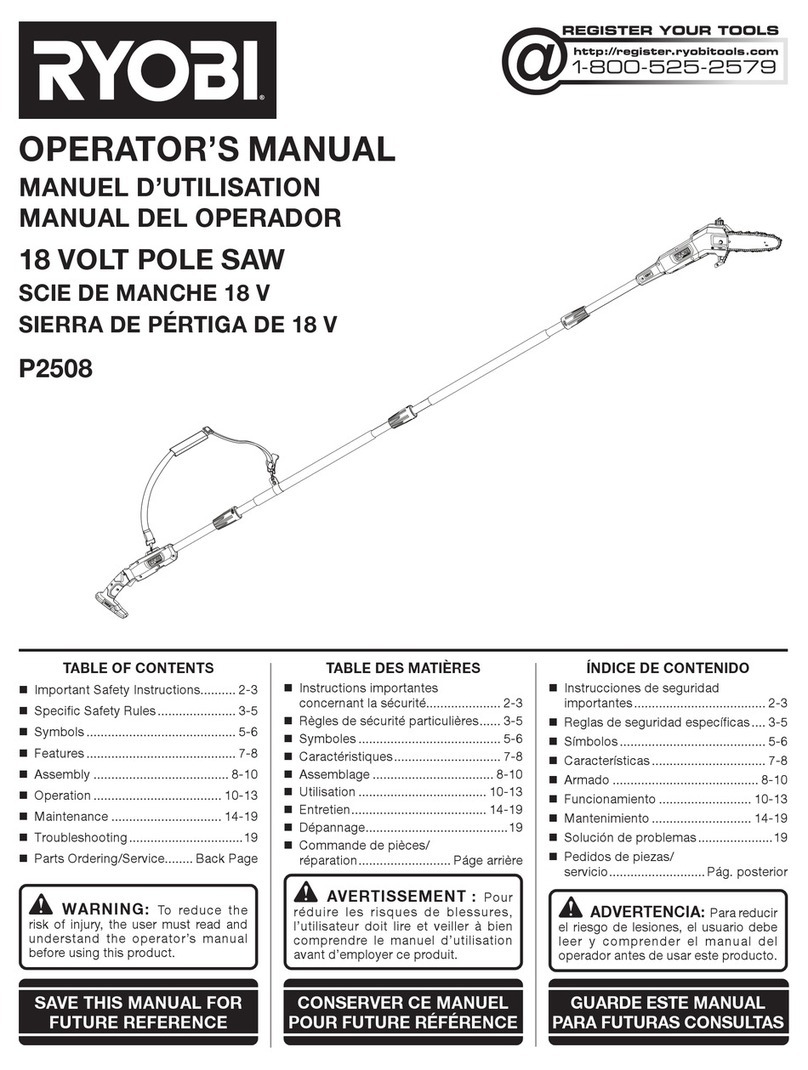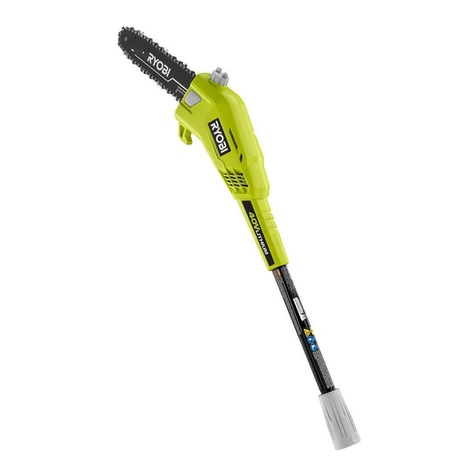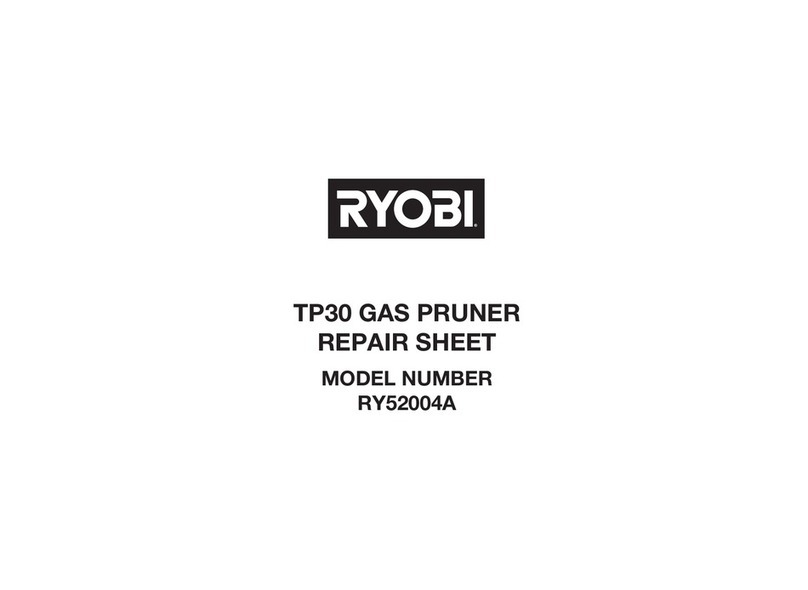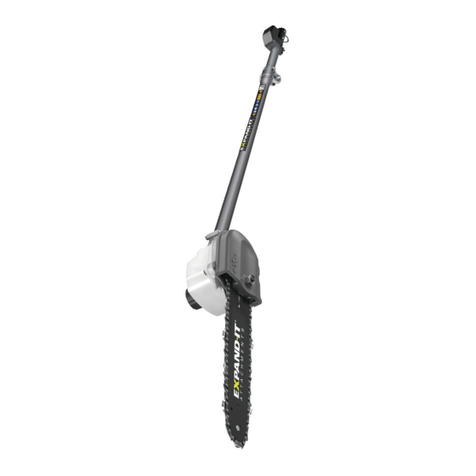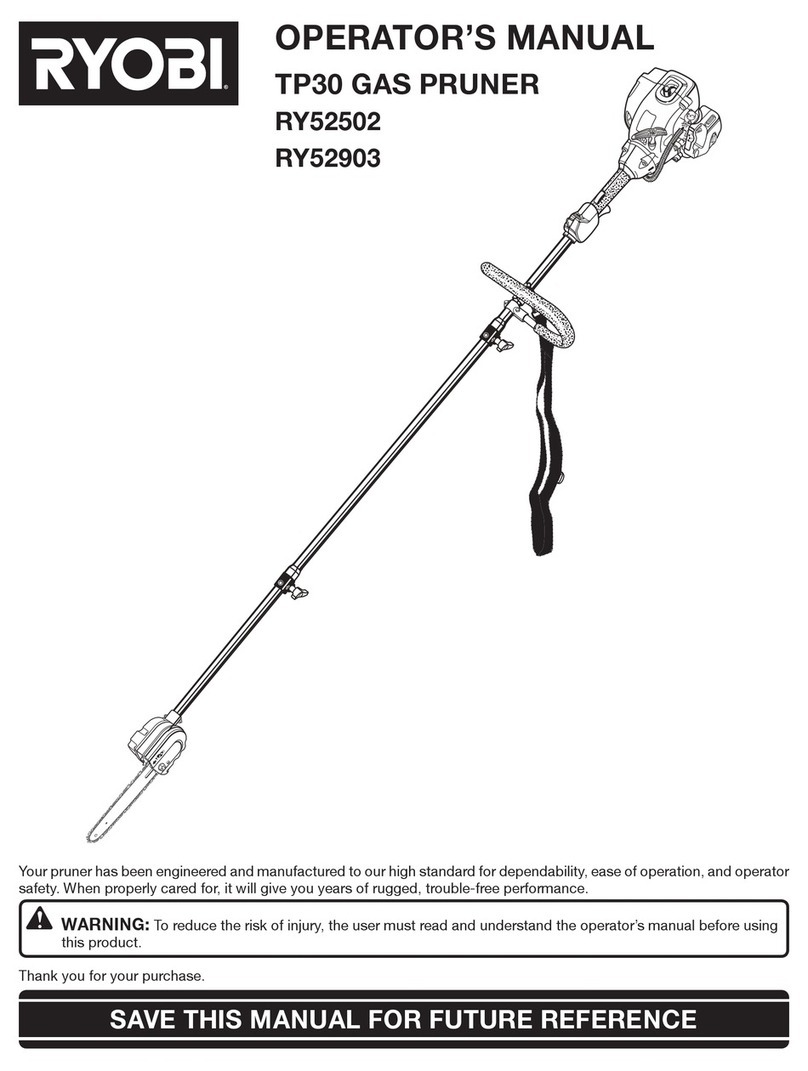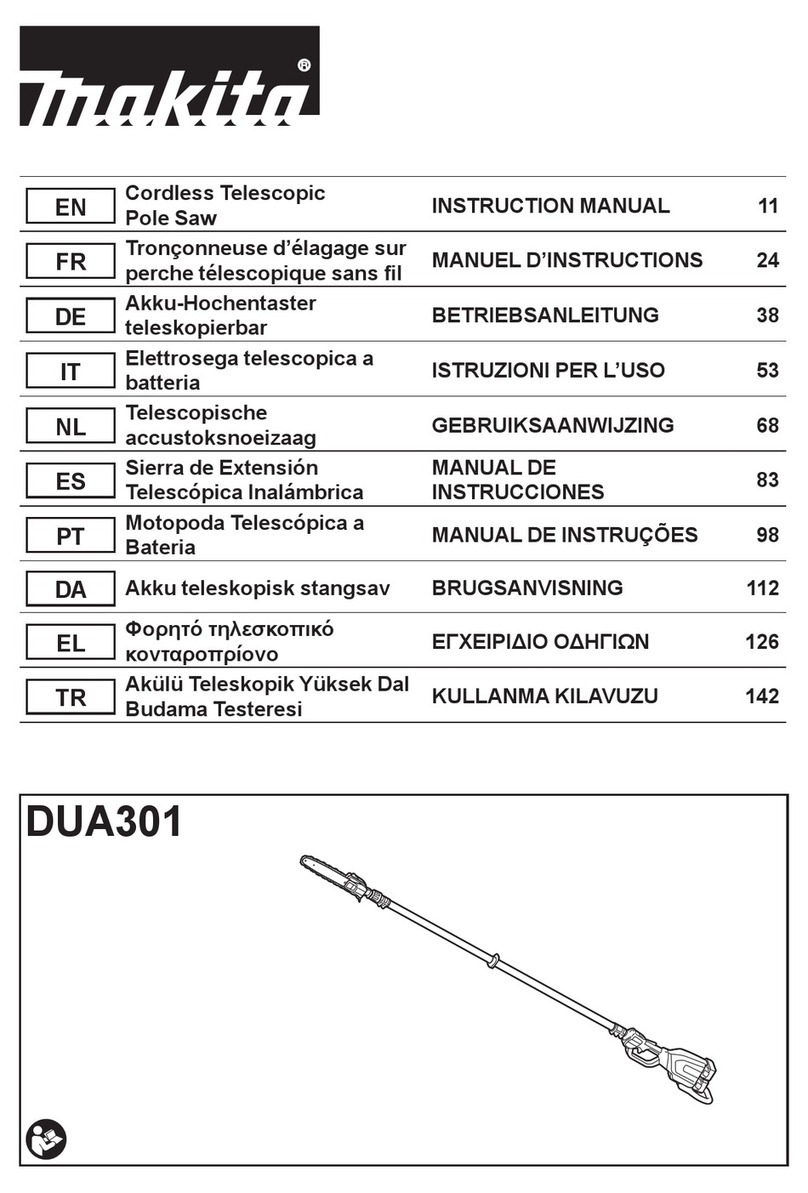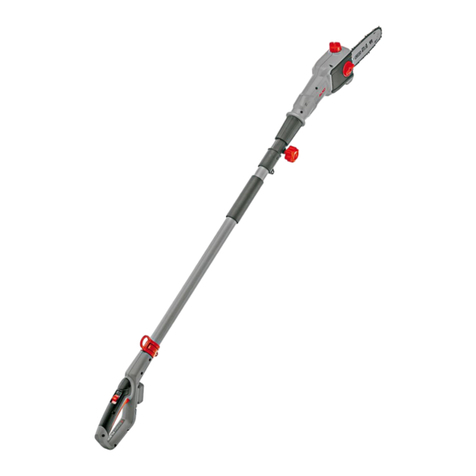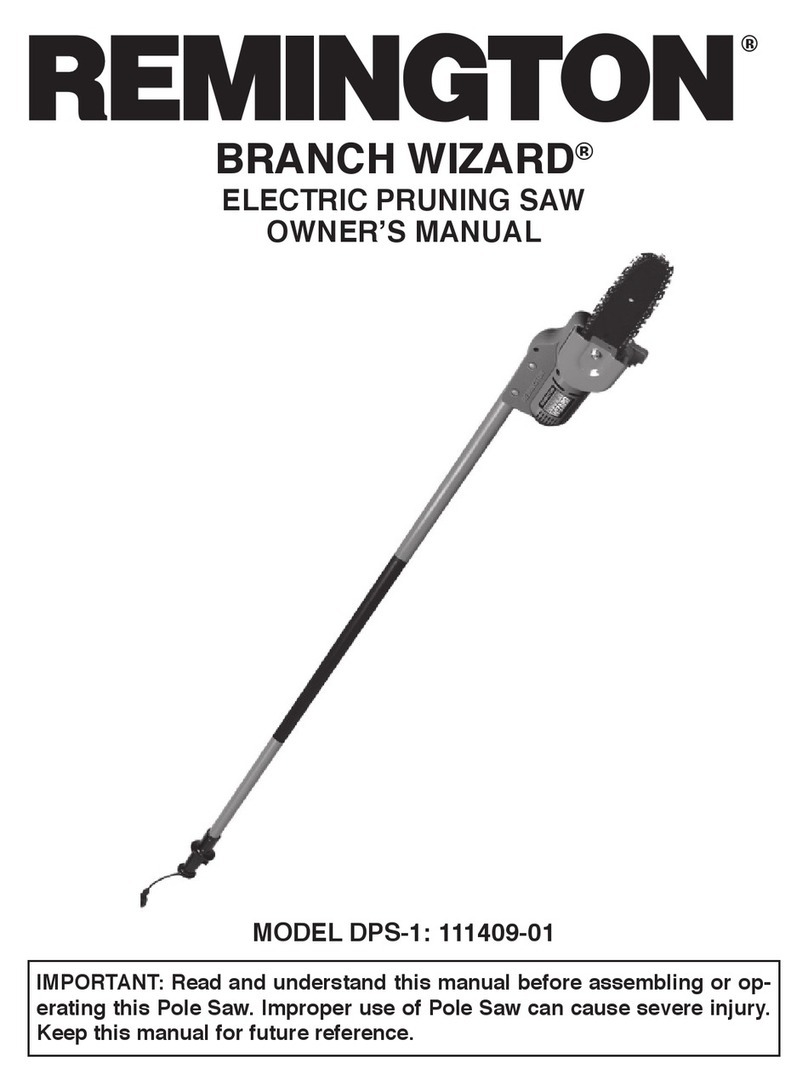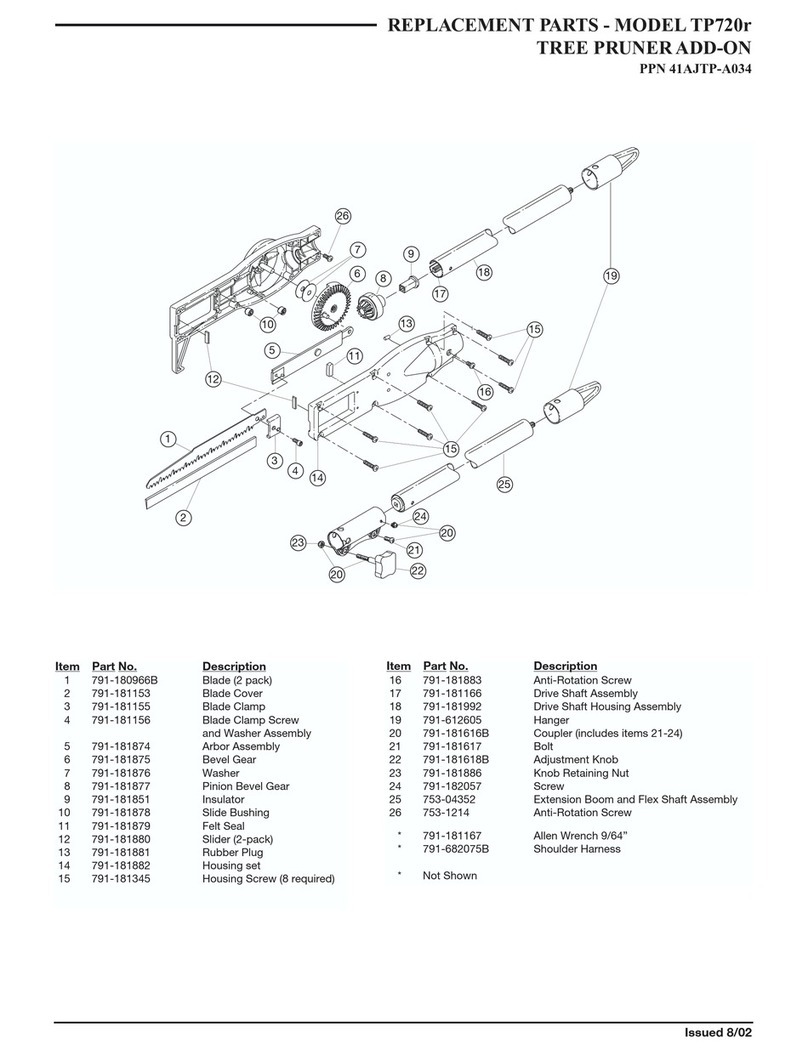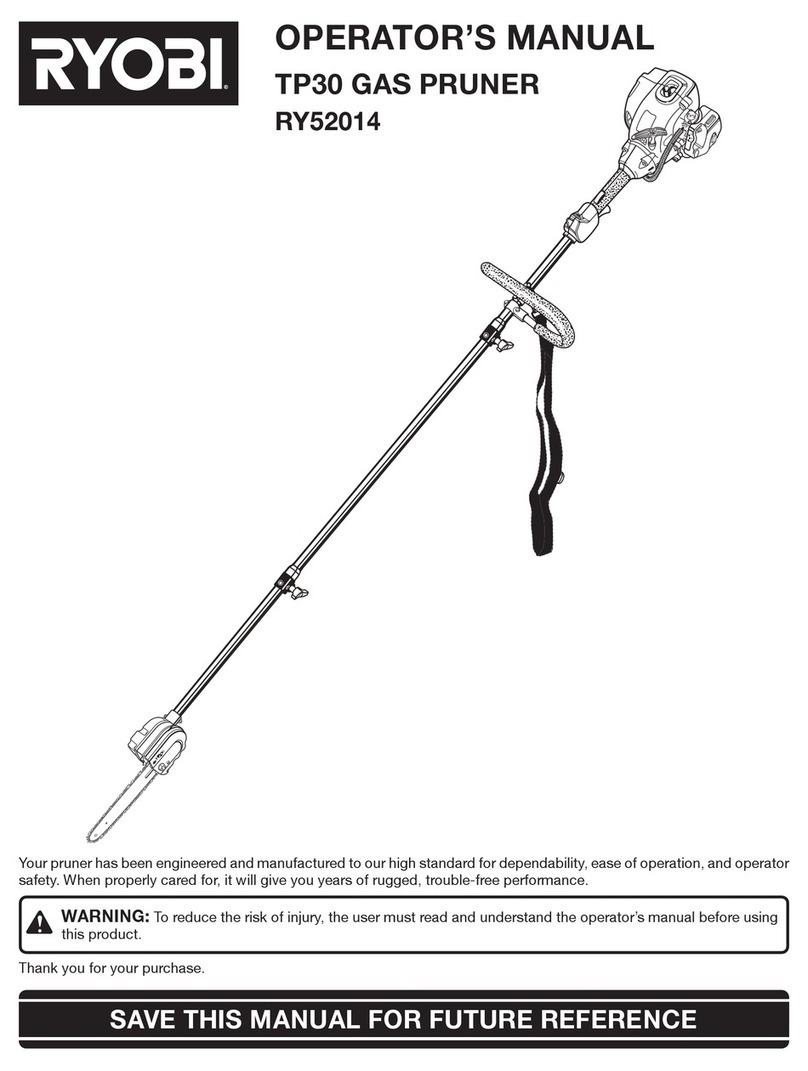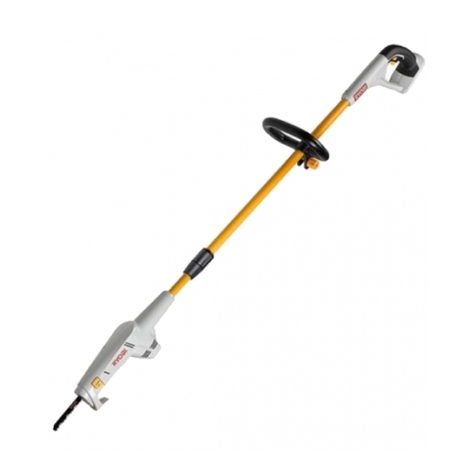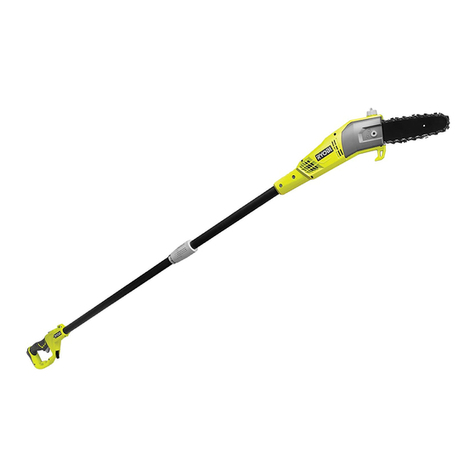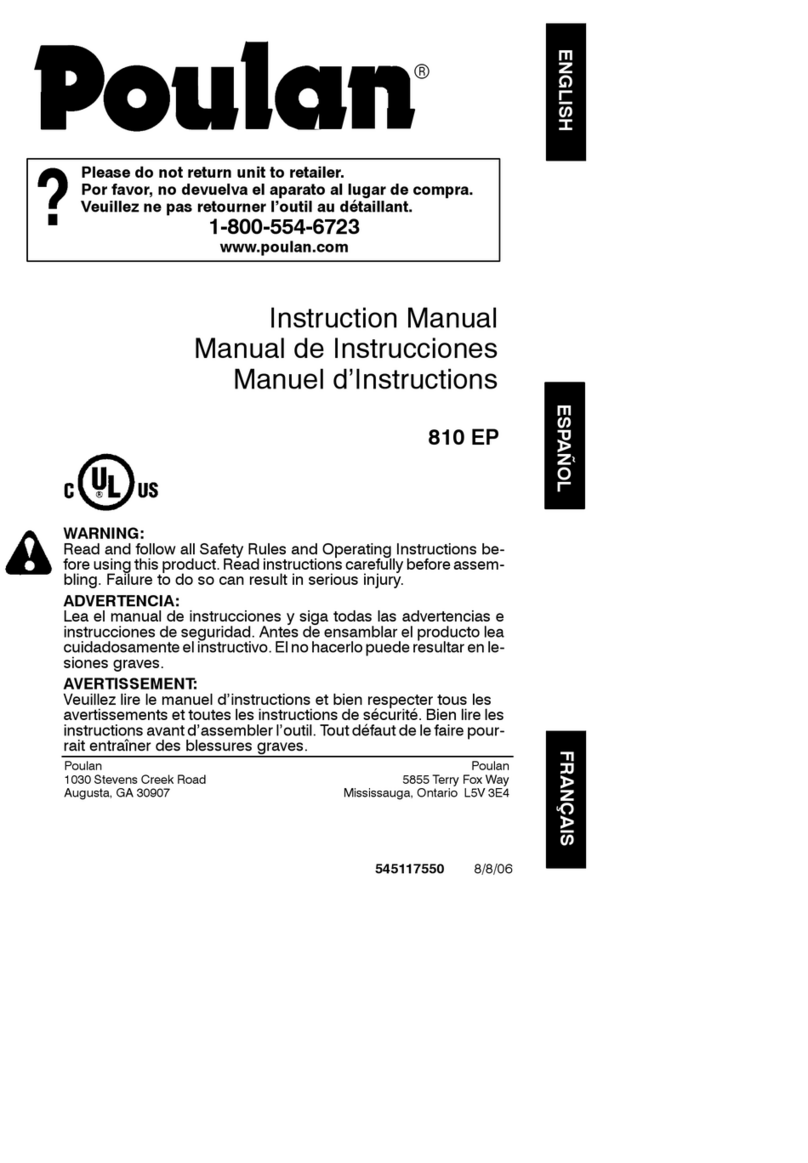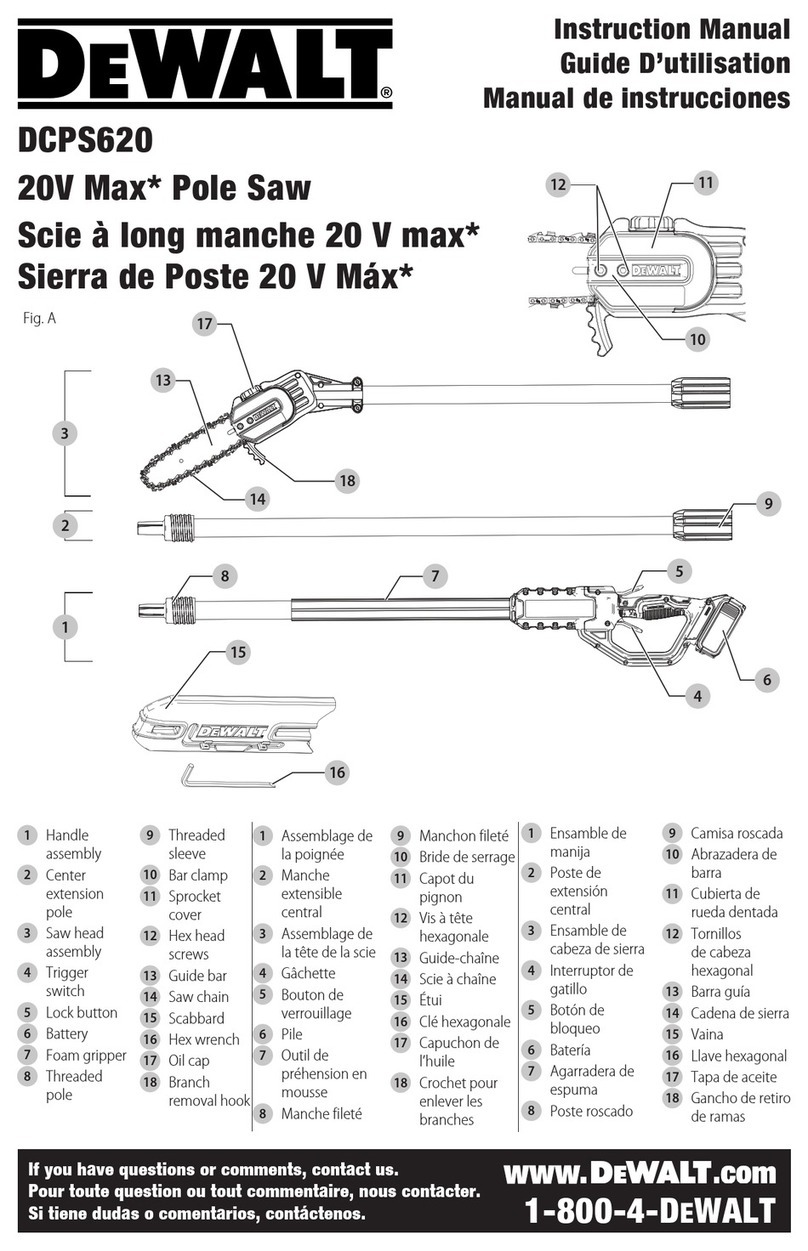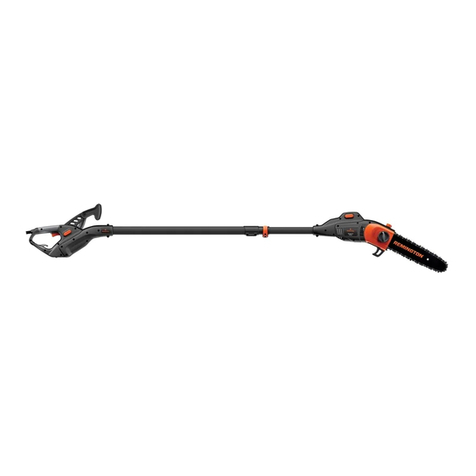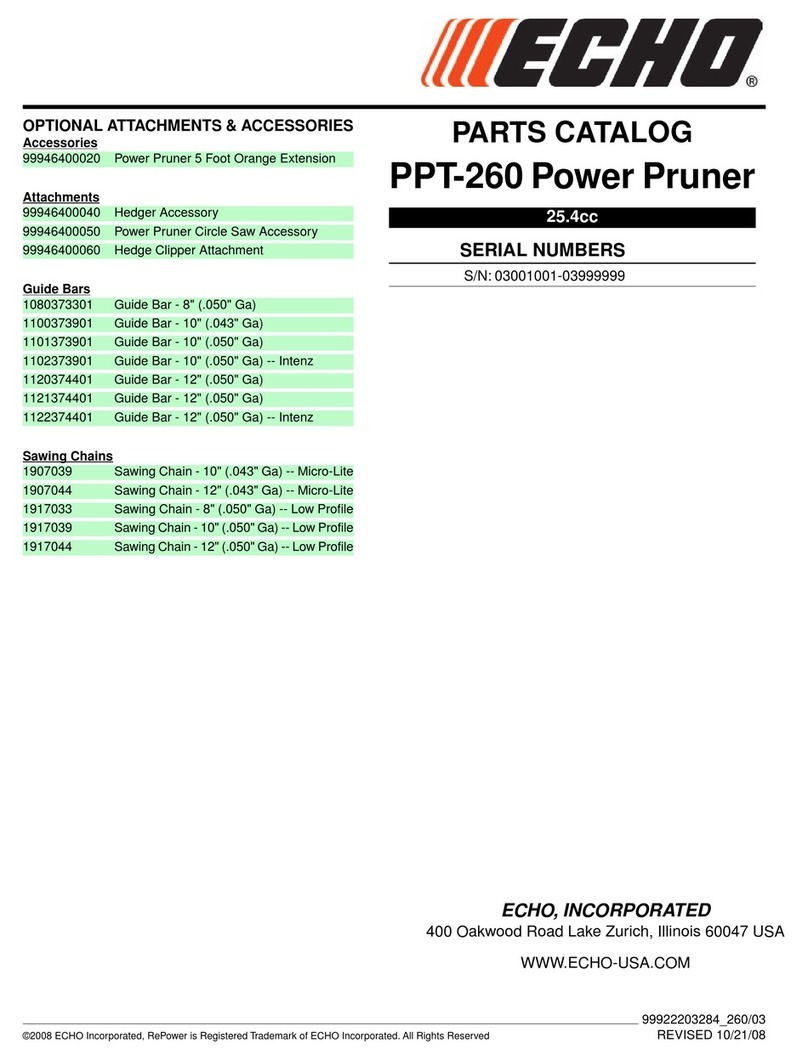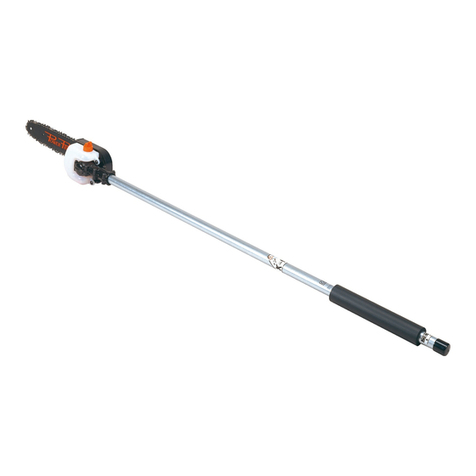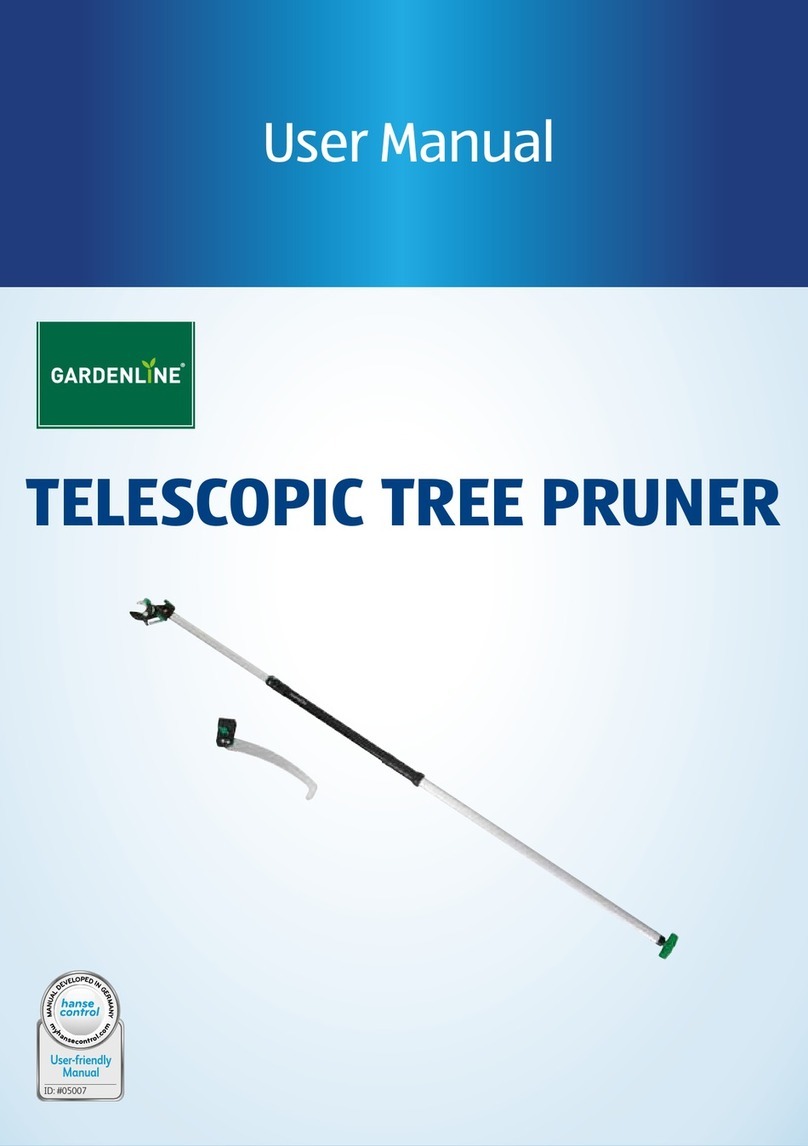
MAINTENANCE
WARNING
When servicing, use only identical replacement
parts. Use of any other parts may create a hazard
or cause product damage.
WARNING
Always wear ear protection and safety goggles or
safety glasses with side shields during power tool
operation or when blowing dust. If operation is
dusty, also wear a dust mask.
WARNING
Before inspecting, cleaning or servicing the unit,
stop the motor, wait for all moving parts to stop,
and disconnect from power supply. Failure to
follow these instructions can result in serious
personal injury or property damage.
GENERAL MAINTENANCE
Avoid using solvents when cleaning plastic parts. Most
plastics are susceptible to damage from various types of
commercial solvents and may be damaged by their use.
Use clean cloths to remove dirt, dust, oil, grease, etc.
WARNING
Do not at any time let brake fluids, petrol,
petroleum based products, penetrating oils, etc.,
come in contact with plastic parts. Chemicals can
damage, weaken, or destroy plastic, which may
result in serious personal injury.
All chain saw service, other than the items listed in the
instruction manual maintenance instructions, should be
performed by competent chain saw service personnel.
TENSIONING THE CHAIN
See Figures 10-11
WARNING
To avoid possible serious injury, never touch or
adjust the chain while the motor is running. The
saw chain is very sharp; always wear protective
gloves when performing maintenance to the chain.
Note: New chain tends to stretch; check chain tension
frequently and tension as required.
nStop the motor and disconnect from power supply
before setting the chain tension. Make sure the
guide bar nut is loose to finger tight, turn the chain
tensioning screw clockwise to tension the chain.
Refer to for additional information.
Note: A cold chain is correctly tensioned when there
is no slack on the underside of the guide bar, the
chain is snug, but it can be turned by hand without
binding.
nChain must be re-tensioned whenever the flats on
the drive links hang out of the bar groove as shown in
Fig. 10.
nDuring normal operation, the temperature of the chain
will increase. The drive links of a correctly tensioned
warm chain will hang approximately 1.3mm (0.050in)
out of the bar groove, as shown in fig. 11.
CAUTION
Chain tensioned while warm, may be too tight
upon cooling. Check the “cold tension” before next
use.
REPLACING THE BAR AND CHAIN
See Figures 12-15
nRemove the bar nut (11mm) and drivecase cover.
nThe bar contains a bar stud slot that fits over the bar
stud. The bar also contains a chain tensioning pin
hole which fits over the chain tensioning pin.
nPlace the bar onto the bar stud so that the chain
tensioning pin fits into the chain tensioning pin hole.
nFit the chain over the sprocket and into the bar
groove. The cutters on the top of the bar should
face toward the bar tip, in the direction of the chain
rotation.
nReplace the drivecase cover and install the bar nut.
Tighten the bar nut finger tight only. The bar must be
free to move for tension adjustment.
nRemove all slack from chain by turning the chain
tensioning screw clockwise, ensure that the chain
seats into the bar groove during tensioning.
nLift the tip of the bar up to check for sag. Release the
tip of the bar, and turn the chain tensioning screw 1/2
turn clockwise. Repeat this process until sag does not
exist.
nHold the tip of the bar up and tighten the bar nut
securely.
nChain is correctly tensioned when there is no slack
on the underside of the bar, the chain is snug, but it
can be turned by hand without binding.
Note: If chain is too tight, it will not rotate. Loosen
the bar nut slightly and turn adjusting screw 1/4
turn counterclockwise. Lift the tip of the bar up and
retighten bar nut.
CHAIN OILER
See Figure 16
nUse Premium Bar and Chain Lubricant. It is designed
